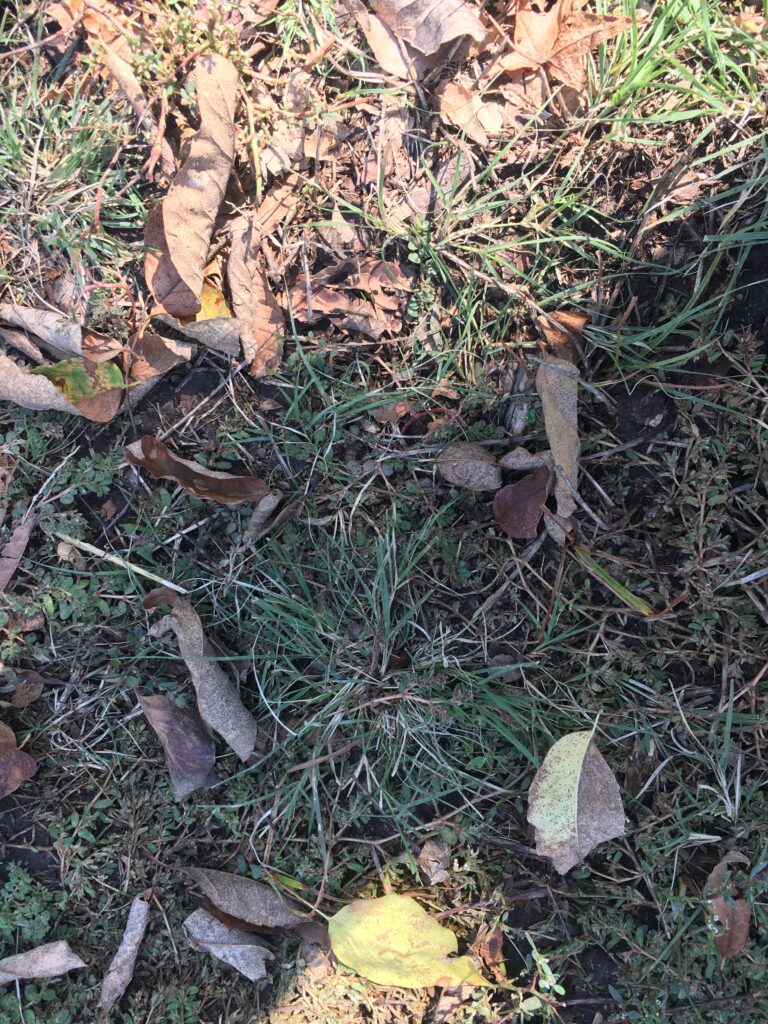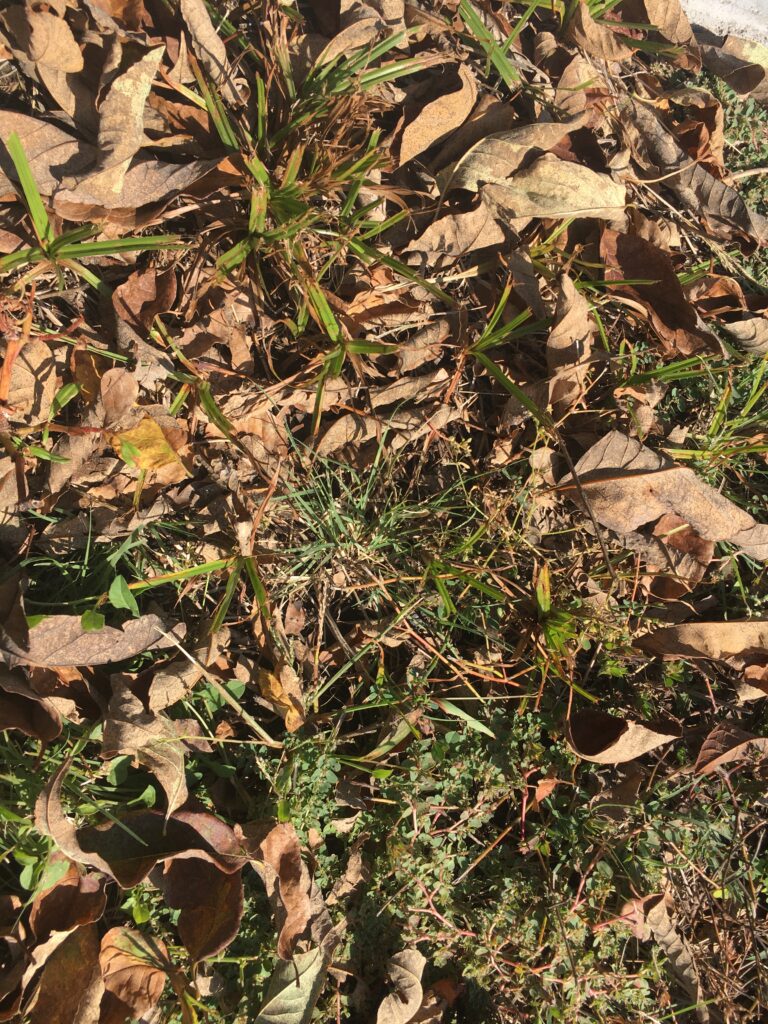It has been almost a year since our buffalograss seeding experiment began. In this new approach, we planted the buffalograss seeds along with annual ryegrass in the fall or early winter. In theory, the annual ryegrass, a cool season grass will germinate and hold the soil through the winter. The buffalograss seeds will work their way into the soil with the natural freeze/thaw of the soil throughout the winter. These seeds will then germinate on their own the following spring with annual rainfall and warm 60 degree soil temperature.
Last fall I prepared the soil as if I was planting fescue so the annual ryegrass seed would germinate with daily watering. This loose seed bed helped the annual ryegrass to germinate in about a week or ten days. This method flipped the traditional buffalograss seeding upside down. Typically, I have areas prepared to plant buffalograss in May and June. Buffalograss it is a native warm season grass that needs to be planted when soil temperatures are above 60 degrees.
Update
I have been pleasantly surprised. The little buffalograss seedlings have started to spread in amongst the crabgrass and knotweed. I believe it will begin to overpower these weeds and completely cover the areas next year.

I may look at putting a preemergent herbicide down next spring to give the buffalograss less weed competition. This is primarily to control summer annuals such as crabgrass and foxtail. Barricade (prodiamine), Pendulum Aquacap (pendimethalin), Dimension (dithiopyr), Specticle (indaziflam) are recommended pre-emergent herbicides on established Buffalograss stands. Read and follow the chemical label application instructions for best results. Pre-emergent herbicides can also be applied in the fall to control that pesky weed, little barley.
When asked if I would do this buffalorass planting method again, I would say yes. For small areas of 1000 sq. ft or less, it makes sense and saves so much water. For larger areas, I think it is a toss-up. I think it will be successful either way. Of course, summer seeding take at least daily watering for the first 10-14 days to get the seed to germinate. For large areas, this obviously requires so much water because the soil dries out quickly with wind and heat. I think you can be successful with either method but I really liked using less water overall.
We encourage people to use buffalograss in areas that receive at least six hours of sunlight each day throughout the year. Newer varieties are vigorous growers and require little to no water once established. Compare that to a traditional fescue lawn, which needs one to two inches of moisture per week to keep it alive in the summer. These newer buffalograss forms stay green longer in the fall and green up earlier in the spring. If kept relatively weed free, they require less frequent mowing. Buffalograss needs little to no fertilizer and will reduce your overall maintenance.

